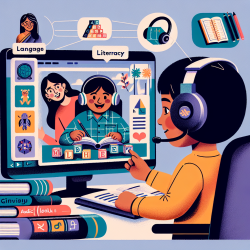As practitioners dedicated to creating positive outcomes for children, it is essential to stay informed about the latest research and integrate evidence-based practices into our interventions. The study titled Visual function assessment, ocular examination, and intervention in children with developmental delay: A systematic approach - Part 2 offers valuable insights into improving visual function in children with developmental delays. This blog aims to highlight key takeaways from the research and suggest practical applications for your practice.
Understanding the Importance of Visual Function Assessment
Children with developmental delays often face multiple challenges, including visual impairments. According to the research, early and accurate assessment of visual function is crucial for devising effective intervention strategies. The study emphasizes the need for comprehensive visual assessments, including:
- Central, steady, maintained (CSM) fixation
- Tracking vertical, horizontal, diagonal, and circular movements
- Scanning two or more objects presented
By utilizing these assessment techniques, practitioners can better understand the specific visual challenges each child faces and tailor interventions accordingly.
Implementing Effective Interventions
The research outlines several intervention strategies that have shown to improve visual function in children with developmental delays. Key recommendations include:
- Parent and Family Counseling: Engaging parents and family members in the intervention process is critical. Providing emotional support and information about the child's condition can help families cope and actively participate in the rehabilitation process.
- Support Services: Leveraging welfare initiatives and schemes can provide additional support to families. These services include early intervention programs, day care, respite care, and health insurance.
- Developmental Screening and Monitoring: Utilizing objective, well-researched tools to determine rehabilitation goals and monitor progress ensures that interventions are effective and adaptive to the child's needs.
- Interdisciplinary Approach: A team of professionals, including vision rehabilitation specialists, therapists, and educators, should work collaboratively to create and implement an Individualized Education Plan (IEP) tailored to the child's needs.
Special Considerations for Children with Cerebral Visual Impairment (CVI)
Children with CVI present unique challenges that require specialized intervention strategies. The study highlights several guidelines for handling children with CVI:
- Reduce visual and auditory distractions to help the child focus.
- Use single, sequential presentations to avoid overwhelming the child.
- Provide multiple exposures to visual stimuli to aid in understanding and recognition.
- Ensure optimal positioning to facilitate visual attention and engagement.
By following these guidelines, practitioners can create a supportive environment that maximizes the child's visual potential.
Encouraging Further Research
While the study provides a robust framework for assessing and intervening in visual function, ongoing research is essential for continuous improvement. Practitioners are encouraged to stay updated with the latest findings and consider contributing to research efforts to enhance our collective understanding and practices.
To read the original research paper, please follow this link: Visual function assessment, ocular examination, and intervention in children with developmental delay: A systematic approach - Part 2










